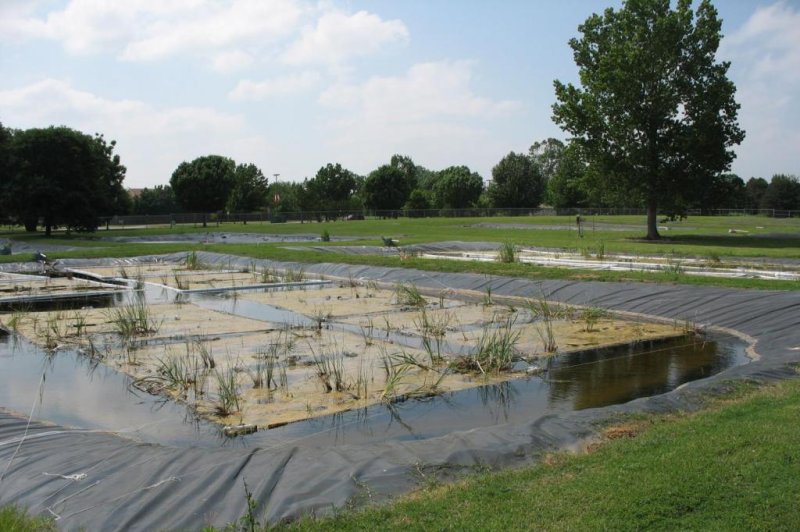Researchers tested the water-cleaning abilities of different floating wetland designs in a model wastewater treatment plant at the University of Oklahoma Aquatic Research Facility. Photo by William Strosnider
Jan. 25 (UPI) -- Occasionally, large chunks of wetland habitat -- mats of soil and grasses -- are dislodged and become floating islands of soggy vegetation. Recently, these floating islands became the inspiration for a new kind of water treatment technology.
When a team of researchers from Saint Francis University in Pennsylvania and the University of Oklahoma deployed floating wetlands at a model wastewater treatment plant, they measured a significant reduction in nitrogen.
Scientists tested the cleaning abilities of two wetland plants rooted in four different floating materials: burlap, mulch, utility netting and recycled plastic bottles.
"The main result is that engineered floating treatment wetlands could affect water quality in many of the same ways that naturally-occurring floating wetlands do," researcher William Strosnider said in a news release.
Researchers aren't quite sure what biological and chemical mechanisms were responsible for reducing nitrogen levels. It's likely the plants themselves absorb some of the nitrogen, but researchers believe much of it was likely processed by microbial communities living in the roots and soil of the floating wetlands.
Floating wetlands could be deployed in natural waterways, too, researchers suggest. They could help regulate temperature, preventing harmful algal blooms. They could also provide habitat.
"The area directly beneath the floating wetlands is high quality habitat, as small fish and amphibians can use the maze of roots to hide from predators," Strosnider said. "In general, the value of habitat that floating wetlands, or any type of treatment wetland, can provide has been poorly studied. We took a small step forward with our study."
Researchers detailed their experiments with floating wetland models in the Journal of Environment Quality. Strosnider hopes to develop self-sustaining floating wetland designs, or "extensive designs."
"The next step is to take the lessons learned and test improved extensive designs," he concluded. "The really big thing that we're working on here is the ability for them to grow and maintain themselves, and hence become a sustainable low-maintenance part of a treatment system. That really was the most interesting and novel part of this work."















